Stuka Catastrophe!
Some of the worst military disasters occur during training exercises. For instance, at least 749 American servicemen died during a practice landing at Slapton Sands, Devon, UK, on 27 April 1944 while preparing for the D-Day landings (Exercise Tiger). That they happen during exercises doesn't make deaths any less painful or heroic or important. Dead is dead.
This is about a great tragedy that befell the Luftwaffe on the eve of World War 2. There are lessons to be learned about the importance of placing safety first and not taking anything for granted, but mostly this is a story about needless deaths.
The Stuka Always Has Been Controversial
The Junkers Ju 87 Sturzkampfflugzeug ("Stuka") dive bomber always has been a controversial plane, and I mean that literally. From the day they were first considered by the Luftwaffe, Stukas had many doubters. Its first flight was on 17 September 1935, and for that time it was reasonably capable but not considered a world-beater. Stukas were used in the Condor Legion during the Spanish Civil War with success, but a lot of doubts remain about the utility of divebombing and the Stuka in particular. For one thing, air defenses in Spain weren't of the caliber the Luftwaffe could expect to see elsewhere.
Many experts considered the Stuka to be underpowered or, in other words, slow and vulnerable. Rear gunners couldn't adequately protect planes that waddled along in their missions and then presented fat targets after dropping their payloads. The whole ground-attack concept by a dive bomber, in fact, was hotly debated during the inter-war period. Some air force generals considered dive bombers to be almost suicidal due to the manner in which they attacked targets. The Royal Air Force, in particular, took a dim view of dive bombers. Only the United States embraced the dive bomber concept early on, and then only for its naval air units where accuracy was essential.
But, on the other hand, dive bombers did offer greater accuracy than level bombers. With the Wehrmacht interested in destroying heavy fortifications being built by its nearest neighbors, accuracy was very desirable.
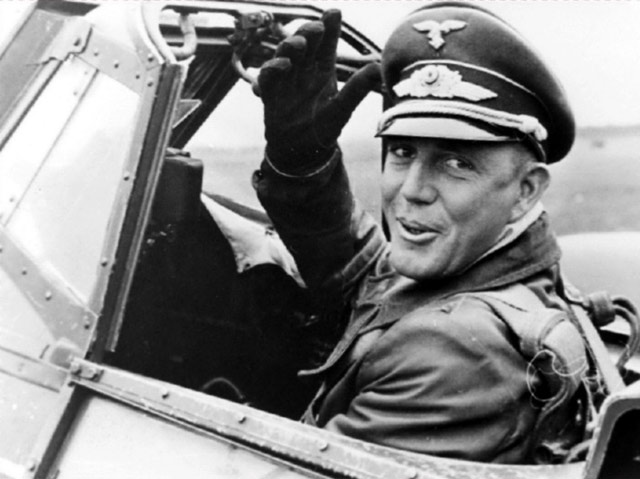 |
| General der Flieger Wolfram Freiherr von Richthofen. Cousin of the Red Baron and a World War I ace, Richtofen was a master strategist relied on time and time again by Adolf Hitler to save lost situations. |
Luftwaffe General Wolfram von Richthofen was one of the chief Stuka doubters. The difference between Richtofen and many others was that he was in a position to do something about it. Richtofen was in charge of developing and testing new aircraft in the Technisches Amt, or Technical Service, under the overall direction of Hermann Goering's favorite Ernst Udet. While Udet was more of a barnstorming pilot (and quite possibly the best in the world at aerobatics) than an executive type, he had Goering's ear. This meant that Udet held all of the real power in the Luftwaffe's plane development that there was to hold.
On 9 June 1936, Richtofen took a bold step and canceled the Stuka development. He did this based on the advice of experts for the reasons mentioned above.
There was only one problem with this decision. Richtofen didn't know that Udet, for whatever reason, had strong feelings about the Stuka. Apparently, Udet had studied two Curtiss Hawk IIs purchased from the United States and really liked the dive bomber concept. Udet even flew one of the US dive bombers during the 1936 Berlin Olympic Games. What transpired is that Udet, and thus Goering, decided that a dive bomber offered cheap but effective tactical performance. Experts be damned!
Udet overruled Richtofen the very next day and the Stuka was built.
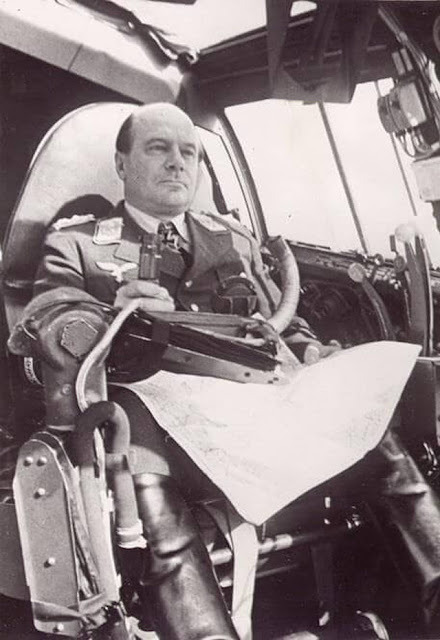 |
| Ernst Udet was the "real deal." He was the top-scoring surviving pilot of World War I with 62 confirmed kills and a world-renowned aerobatic pilot. Even as head of the Luftwaffe's development office, Udet occasionally served as his own test pilot, as above. |
That's how widely opinion varied about the Stuka from the very start. The controversy has continued ever since, as some believe the Stuka was a highly effective dive bomber while others just as correctly point to its extreme vulnerability to attack. For the Stukas to become truly effective, Wehrmacht generals had to be convinced to trust the Stukas to come to the aid of ground soldiers. That led to the demonstration discussed below.
Oh, by the way, you may be wondering who was right - Udet or Richtofen. Well, that's... controversial. But I'll note in passing that Udet put a gun to his head a few years later. And I'll also note that Stukas flew effectively to the very last day of the war.

The Disastrous Neuhammer Demonstration
With war fast approaching, the Luftwaffe decided to prove to the army generals how effective the Stukas could be. Accordingly, Army (Heer) and Luftwaffe generals (including Wolfram von Richthofen, now the Stuka’s boss, and Generals Hugo Sperrle and Bruno Loerzer) gathered at the airfield near Neuhammer-am-Queis, Silesia (present-day Świętoszów, Poland) on 15 August 1939. They were there to witness a demonstration of divebombing accuracy by the still fairly new Stukas. The demonstration exercise involved bombing a ground target, with the intent to inspire confidence in the army generals. The Luftwaffe wanted them to willing to call in air support for their troops at the front. They would require pinpoint accuracy so as to avoid having the Stukas drop their bombs mistakenly on nearby German soldiers.
Instead of a successful demonstration, they witnessed a catastrophe. Within the Luftwaffe, this event became known as the "Neuhammer Stuka Disaster" (Neuhammer Stuka-Unglück).
There were clouds over the target area. However, the meteorologists reported clear visibility underneath the cloud layer reported to be around 2500 feet. Ordinarily, training flights would be canceled in such circumstances. However, this was no ordinary training flight, but a demonstration prepared for the top names in the Wehrmacht. The Luftwaffe decided to go ahead with the exercise.
It is easy to understand the Luftwaffe generals' thinking. It would be an impressive sight for the army generals to see the Ju 87 B-1 Stukas descend out of the clouds, hit the target, and then fly back up into the clouds without incident. Any danger, the Luftwaffe flight controllers decided, was minimal because the pilots would be able to complete their dives easily within 2500 feet of visibility.
The demonstration began as planned. Hauptmann Walter Sigel led a three-plane Schwarm of Staffel 2 of STG76 (Sturzkampfgeschwader 76) down out of the clouds first, with one wingman on either side. Why Staffel 2 went first is a bit of a mystery, perhaps simply a function of random plane positioning in the sky. The three pilots dove down through the clouds, essentially blind, waiting patiently for the skies to clear so they could complete their bomb runs.
However, the meteorological reports turned out to be erroneous. Instead of clear visibility up to 2500 feet, it turned out the clouds came down to 300-600 feet. Whether this was because of poor weather staff work or perhaps because of a late change in conditions is unclear. The important thing is that the lower ceiling did not give the pilots enough time to recover.
At the last moment, while exiting the clouds in a power dive, Sigel, who was carefully scanning for the target, saw the darker ground appear much closer than he expected. He yanked back on the stick in a panic and yelled to the others to do the same. Sigel just barely escaped with his life, his Stuka practically grazing the ground as he pulled out of the dive. However, his two companion pilots could not recover quickly enough (likely because they were focusing on Sigel's plane for positioning purposes rather than the ground). Those two planes both crashed, killing the two men (pilot and rear gunner) in each plane.
But that was just the beginning of the horror.
 |
| Losses at the Neuhammer Stuka Diaster on 15 August 1939. |
The demonstration continued despite the crashes due to inadequate communication and the close order of bombers. Once in their dives, the planes followed one after another like a waterfall coming down over a cliff. One side note is that Stukas were equipped with automatic pull-out systems. These provided that, once the bomb had been dropped, the airplane automatically began a 5–6 g recovery. This could save the airplane if the pilot became target-fixated, or blacked out. However, particularly early in Stuka history, pilots preferred to rely on their own senses and typically disconnected these systems. These systems probably wouldn't have saved the planes in this particular situation anyway.
A total of 13 Stukas crashed an Neuhammer., carrying their 26 aircrews to their graves. All right in front of the top military brass in the Wehrmacht.
The devastation could have been even greater. However, Squadron Kommandeur Hauptmann Rudolf Braun, circling above in his own Stuka with the Stab (headquarters) pilots waiting to take their turn last (again, the Staffel ordering is unexplained), heard Sigel's frantic shouts of danger. This prevented him from leading his own pilots down to certain death. Others weren't so lucky. All nine following Stukas of Staffel 2 also crashed, along with two more of Staffel 3.
This was among the worst losses Stukas suffered in any one day during the entire war. It was exceeded only on
18 August 1940 during the Battle of Britain, when 17 Stukas were lost due to enemy action (with many others damaged). That day resulted in the effective withdrawal of Stukas from the Battle of Britain.
The Aftermath
Despite the Neuhammer tragedy, Stukas remained highly popular among the top leaders of the Luftwaffe. They remained in service until the very last day of World War II, achieving some great tactical successes even though they often were more dangerous to their own crewmen than to the enemy. And, you guessed it, the degree to which the Stukas actually succeeded was controversial then and now.
Scapegoats had to be found. Sigel was cleared in the resulting investigation and served throughout the war with distinction. He ultimately was promoted to commander of the Luftwaffe in Norway - these types of safe postings were usually given to top pilots the Luftwaffe didn't want to be exposed to danger any longer. Sigel was awarded the Knight's Cross with Oak Leaves on 2 September 1942.
However, danger still haunted Sigel. During an inspection flight over the Tirpitz on 8 May 1944, Sigel crashed and died when his plane hit power lines in deep fog. Other notables involved in the Neuhammer incident were luckier. The commander of Staffel 1, Oberleutnant Dietrich Peltz, who later became the Luftwaffe's commander of its entire bomber force, was among the Stuka pilots in the units who were warned from diving at the last minute. He survived the war and died peacefully on 10 August 2001.
2021

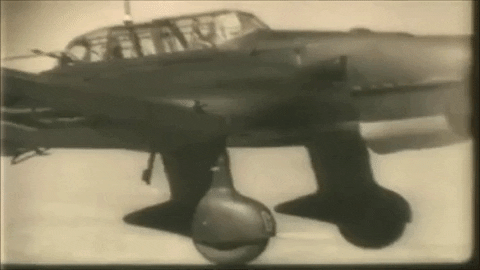



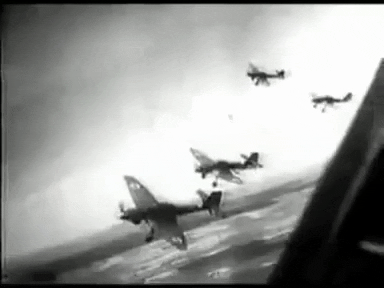

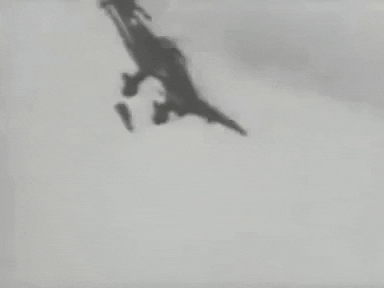



No comments:
Post a Comment